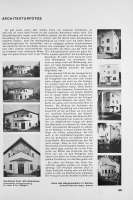Figure 1 First page of Wilhelm Lotz, “Architekturfotos,” Die Form (February 1929). Left column: from Bruno Taut, Ein Wohnhaus [1927]. Right column: Albrecht Jaeger, Haus des Bürgermeisters, Wurzen.
p. 103Today there are so many beautiful photographs of modern
architecture that one can regularly revel in immaculate pictures.
Professional photographs have slowly learned to attend, in
their exposures and their prints, to the proper values for the
final printed image. Indeed, autotypes remain the best reproduction
option for architecture; for, compared to other printing
processes, they render spatial values as well as actual photographic
prints. In nearly all other printing processes, space and
depth disappear, resulting in more painterly [malerische] images.
With a good template and printer, autotypes are not restricted
to the surface but immediately provide the impression of deep
space. For the objective [sachlich] reproduction of architecture—
that is, from the perspective not of visual impact but of
clear presentation of buildings as spatial structures—autotypes
are the best option.
First page of Wilhelm Lotz, “Architekturfotos,” Die Form (February 1929). Left column: from Bruno Taut, Ein Wohnhaus [1927]. Right column: Albrecht Jaeger, Haus des Bürgermeisters, Wurzen.
p. 103Today there are so many beautiful photographs of modern
architecture that one can regularly revel in immaculate pictures.
Professional photographs have slowly learned to attend, in
their exposures and their prints, to the proper values for the
final printed image. Indeed, autotypes remain the best reproduction
option for architecture; for, compared to other printing
processes, they render spatial values as well as actual photographic
prints. In nearly all other printing processes, space and
depth disappear, resulting in more painterly [malerische] images.
With a good template and printer, autotypes are not restricted
to the surface but immediately provide the impression of deep
space. For the objective [sachlich] reproduction of architecture—
that is, from the perspective not of visual impact but of
clear presentation of buildings as spatial structures—autotypes
are the best option.
And yet a danger is evident in current architecture photography—
one to which nearly all photographers succumb to
varying degrees, and not only the photographers but the architects
who have their buildings photographed. This danger is
linked to the modern development of photography and thus
warrants discussion here. For all too often the photographer
is anxious to turn his photographs into good and interesting
pictures. To him the impression the photograph makes as an
interesting representation and an interesting detail is more
important than a clear and objective [sachlich] representation
of the object. Such artistic ambitions on the part of the photographer
are even more evident when accompanied by a noticeable
effort to choose the most interesting possible viewpoint in
order to make what amounts to a still life, albeit differently
than before. Accordingly, we find in architecture photography
a convulsive monumentalization of objects, especially in the
capturing of details. If it were only a question of taking photographs,
it would be entirely different than when we understand
photography exclusively as a transmitter of impressions
of objects; that is, if we understand a photograph—or, better, a
series of photographs—as providing the most precise possible
conception of a building.
This is not the place to lay down rules, but only a few important
pointers and tips for those moments when photographers
risk sliding into the artistic. Photographers and architects should
always ask themselves whether the envisioned photographs
will produce the most objective [sachlich] possible representation—
and then photograph from this vantage point. Perhaps
we must even establish a norm whereby we orient ourselves
toward the cardinal directions more than toward interesting p. 104 pictures and details. Just as one always indicates the cardinal
directions on a site plan, so too one should indicate on every
photograph the cardinal direction from which the photograph
was taken. This would be especially beneficial for residential
buildings. We illustrate two attempts that are of interest insofar
as they offer an interlink to—or, better, an approximation of—
filmic representation. First, the photographer of a house by
[Bruno] Taut advanced toward it incrementally from the countryside
so that one perceives how it becomes more and more
like a cube as one approaches it from a distance. In the second
example, the photographer circled the house with his camera.
By surveying the five ensuing photographs, one gains a sense
of the house’s corporeal physicality [Körperlichkeit]. For the
representation of architectural objects, similar strips of images
[Bildstreifen] may productively supplement larger pictures,
which better show details. As people prepare to mount a photography
exhibition in Stuttgart [namely, Film und Fotografie
or Fifo], they should consider these viewpoints and seek out
options. Above all, they should consider the task of photography
as the transmitter of impressions of objects.



